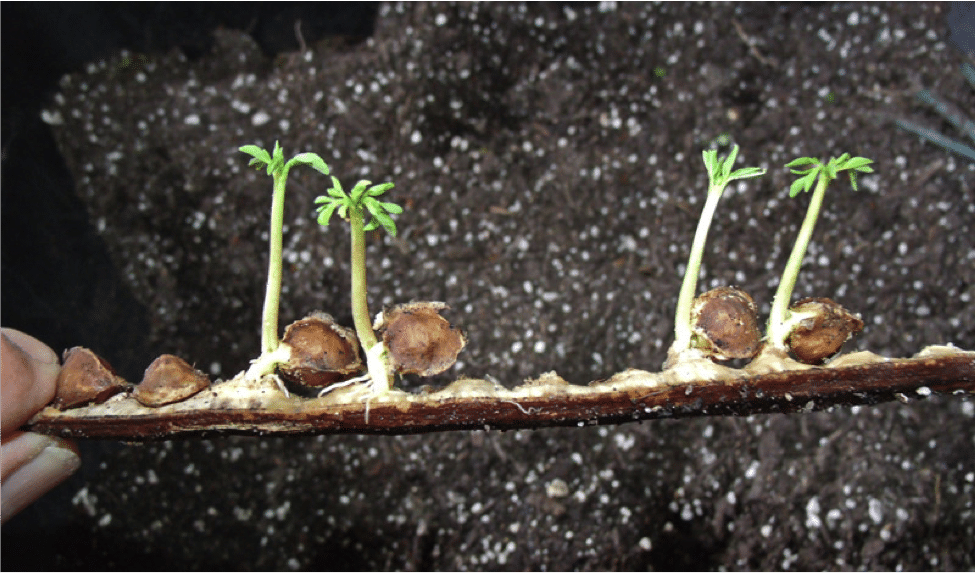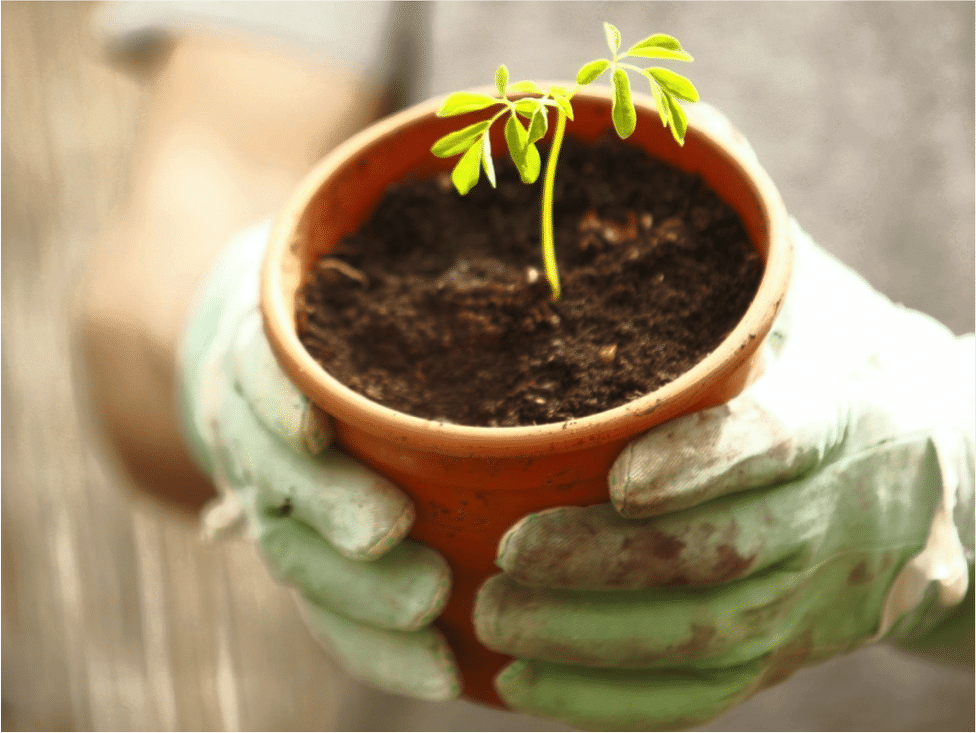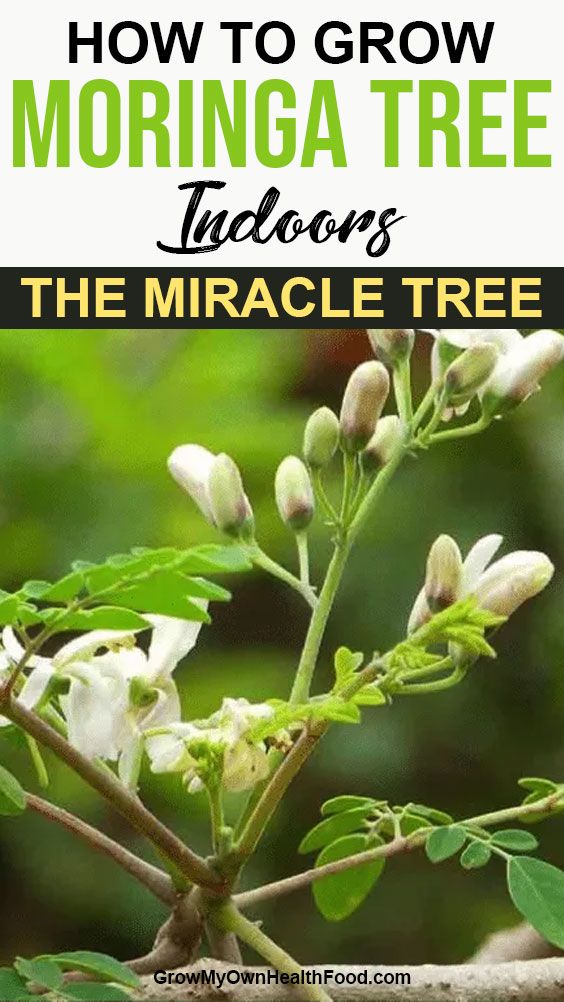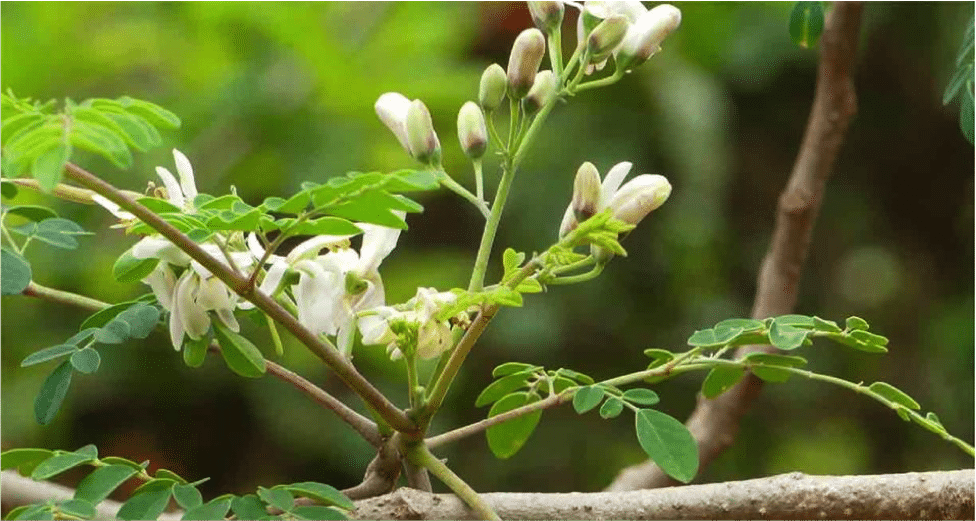Moringa tree has always been praised for its unmatched beauty and multiple health benefits. The best thing about this tree is that you can grow a Moringa tree in your backyard and even indoors. Just by following a few simple techniques, you can grow it easily in any indoor or confined space. Design your indoor herb garden with this miracle tree, plant its seed in pots or containers, and add this nutritious green beauty to your house.
It’s beautiful hanging pods, and delicate flowers give an alluring look to your indoor space. It is one of the most nutrient-enriched plants on the planet and is commonly known as the tree of life. It is an evergreen tree, and the best part about it is, you can make smoothies with its leaves all year round and cook them like spinach to prepare a healthy dinner. You can make the best herbal tea with its dried leave, and the seeds can also be consumed in so many ways like you can eat them readily or roast them to eat like a snack.
This resilient tree is commonly grown in various tropical and subtropical areas. It can also easily grow in temperate climates if exposed to enough sunlight. However, it becomes dormant if the temperature drops to 18°C(64°F). By taking care of its growing requirements, you can have a full-grown moringa tree within eight months of sowing the seeds. If you’re interested in growing a Moringa tree indoor, then give this article a read to know how to grow it successfully, just by following simple steps.
Moringa Tree Starter Plant
You might be interested in getting a head start on your Moringa Tree. So you may choose to buy a plant that has already started growing. Otherwise follow the growing a moringa tree indoors steps below.
- EASY way to produce your very own Moringa trees. Instructions included.
- KIT INCLUDES:1 X clear grow tray: 1 X clear bottom reservoir tray: 1 X clear humidity dome. Organic moringa oleifera seeds + Organic potting mix.
- DIMENSIONS: Tray Size: 7 x 5.3 x 2, Cell size: 1.5 x 1.5 x 2.
- FUN: once your new moringa begin to sprout they really grow fast. One month post germination will have you scrambling to transplant!!
Prices pulled from the Amazon Product Advertising API on:
Product prices and availability are accurate as of the date/time indicated and are subject to change. Any price and availability information displayed on [relevant Amazon Site(s), as applicable] at the time of purchase will apply to the purchase of this product.
Choose the Right Location to Put Your Moringa Tree Pot
You need to plant your Moringa tree in a sunny location because it needs abundant light to grow. So, the selected indoor location should receive a minimum of 6 hours of sunlight per day. Since it’s not tolerant of low temperatures, the Moringa tree will die if exposed to extreme cold weather conditions.
- Material: Made with high quality nonwoven fabric, Built-in handles for easy movement
- Structure: Prevents roots circling and air-prunes plants root structure, so its better than Plastic Containers
- Warmer & Cooler: Keeps plant warmer in winter and cooler in the summer
- Package: 6-pack 7 gallon grow bags
- Holiday Gift Choice for Christmas, We provide detailed instructions for use and maintenance procedures in the pictures and description, if there are other problems, we will reply you in the first ti
Prices pulled from the Amazon Product Advertising API on:
Product prices and availability are accurate as of the date/time indicated and are subject to change. Any price and availability information displayed on [relevant Amazon Site(s), as applicable] at the time of purchase will apply to the purchase of this product.
Moringa Soil Requirement
After selecting the perfect location for your Moringa pot, start by filling it with soil. You can use any potting soil to grow your plant as long as it’s fertile and rich in organic matter. However, the best potting mix for Moringa is 85% garden soil, 10% sand, and 5% composted manure. Draining is not an issue for this hardy plant; it can easily withstand waterlogged conditions.
Growing Moringa Plants from Seeds
Dig holes of 1ft2 (929cm²) wide and 1ft (30cm) deep. Fill them with loose soil and place 3-5 seeds in each hole. Make sure that the seeds aren’t planted deeper than half an inch. Cover it with soil afterward and water it gently.
Remove Unhealthy Saplings
Once your tender Moringa saplings become 6 inches tall (15cm), choose the healthy saplings and get rid of the unhealthy ones. You can apply a layer of compost to boost further growth. Also, don’t overwater the soil to minimize the risk of roots choking.

Transplant the Offspring into Individual Pots
Transplant healthy seedlings of 1ft height (30cm) into separate pots. Plastic pots or geo pots are the best containers for Moringa plants. Their fragile roots can be easily broken; therefore, while transplanting, make sure to use the right tools and techniques to avoid damaging the plant’s root system.

Growing Moringa Plants from Cutting
You can also grow Moringa plants easily through cutting. The best time for preparing the cuttings from the mother tree is when it stopped producing the big pods (fruits). Freshly pruned branches can also be used as cuttings.
Make sure the diameter of your cuttings is at least 1 inch. Greater is better with the Moringa plant when it comes to height, so it is great if you can get a 6ft cutting (183 cm); otherwise, use at least 12 inches long (30 cm) cutting. Plant your cutting straight into the soil, in a deep hole. Cover the soil firmly around the cutting, and water it well.
You can plant cuttings directly into the pots as well. Make sure the size of your pot is according to the size of your cuttings and is capable of holding it up. Put the cutting directly into the pot at least 10 inches (25cm) deep and pack the soil firmly around it.
Watering the Moringa Tree
Water is vital for the healthy growth of a Moringa tree. At the early stage of growth, you need to water it frequently, and once it’s grown, then water it sparingly. It can survive with little water, but frequent watering during the first two months of sowing seed helps it in growing properly.
Moreover, soil in containers get dry easily, so you will need to water it more frequently as compared to Moringa plants growing in your garden. Insert your finger into the soil up to the second knuckle. If it feels dry, water your plant. Don’t apply too much water as it results in yellowing of the leaves and root rot.
Moringa Tree Fertilizer Requirement
A Moringa tree doesn’t require much fertilizer to grow. You can use manure or compost. However, if you are facing growth problems, you can use a general-purpose fertilizer.
Prune the Moringa Tree
It is a fast-growing plant, so it needs regular pruning to promote leaf growth and to maintain manageable height. Once it reaches 8 to 10 feet (2.4 to 3 m) in height, cut it back to your desired level.
You can use the removed branches for propagation. Use pruning shears or a sharp knife to make smooth and straight cuts. Trim the top of the tree and cut the branches back to half of their length. New shoots will produce from the pruned parts and the base of the tree.
Moreover, remove the flowers of the first year of growth; this practice encourages fruiting in the following years. The best time to prune the Moringa tree is after harvest.
- Ideal for cutting stems and light branches. Easy-open lock protects the blade during transport and storage
- Fully hardened, precision-ground steel blade stays sharp, even through heavy use
- Low-friction coating helps the blade glide through the wood, prevents the blades from gumming up with sap and debris and helps the blades resist rust
- Maximum cutting capacity: 5/8 inch diameter
- Lifetime warra
Prices pulled from the Amazon Product Advertising API on:
Product prices and availability are accurate as of the date/time indicated and are subject to change. Any price and availability information displayed on [relevant Amazon Site(s), as applicable] at the time of purchase will apply to the purchase of this product.
Harvesting Moringa Seed Pods
The seed of Moringa is considered as one of the most valuable seeds with so many benefits. It is used to create medicines that can cure multiple ailments. In various areas, Moringa’s seeds are used to purify water and as an animal feed. The seeds are especially popular for their medicinal properties, but they are much more than that.
You can consume its seeds readily or roast them to use as a snack, add them to soups, casseroles, stews, and sauces. Dried seeds can also be put into bread mixes and muffin mixes. These seeds are produced annually in the tropical and sub-tropical countries, and the best time to harvest seed pods is when they are dry and have turned brown, just before they split open and fall to the ground.
- ★ MORINGA NATURAMEX 100% NATURAL, ORGANIC, GMO FREE.
- ★ 1,200 SEEDS+ PER BAG
- ★ ENJOY THE MULTIPLE BENEFITS OF THE OLEIFERA MORINGA SE
Prices pulled from the Amazon Product Advertising API on:
Product prices and availability are accurate as of the date/time indicated and are subject to change. Any price and availability information displayed on [relevant Amazon Site(s), as applicable] at the time of purchase will apply to the purchase of this product.
Conclusion
Summary of Steps for How to Grow Moringa Tree Indoors:
- Place your pot of Moringa in bright sunlight for 6-8 hours daily.
- Although Moringa is drought-tolerant, still, you have to water it moderately to avoid droopy leaves.
- To encourage better growth and fruiting, regularly prune the old branches.
- Remove the blooms of the first year to encourage the fruiting in subsequent years.
- Make sure to timely get rid of weeds and pests, if you observe any.







